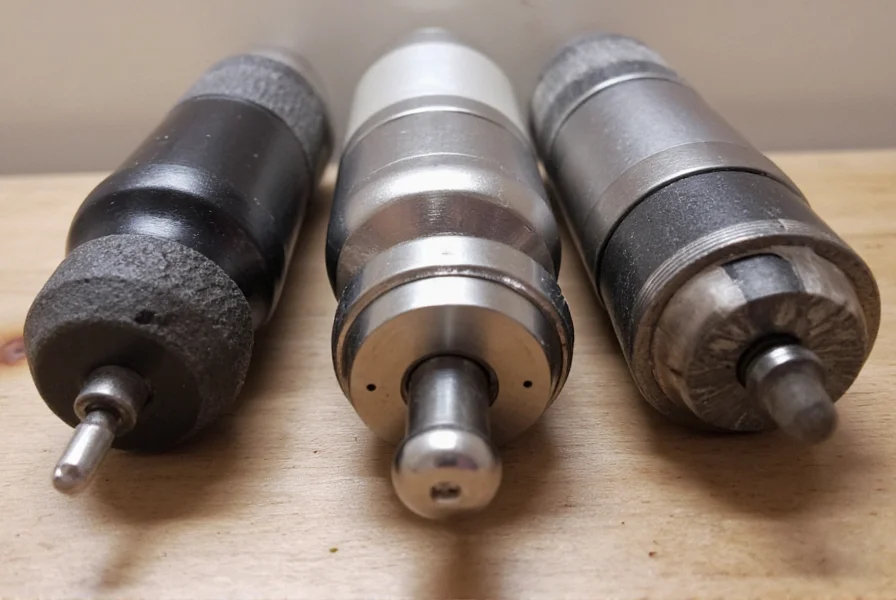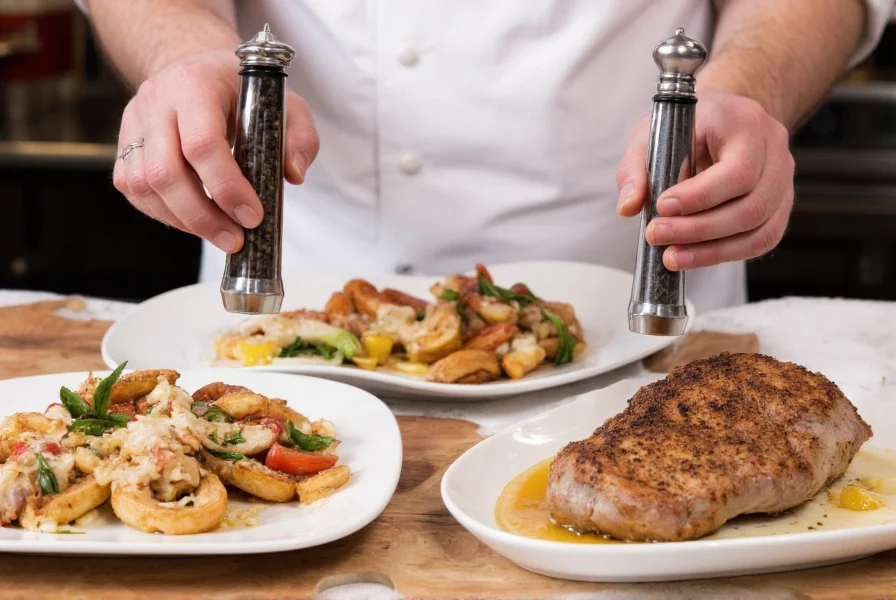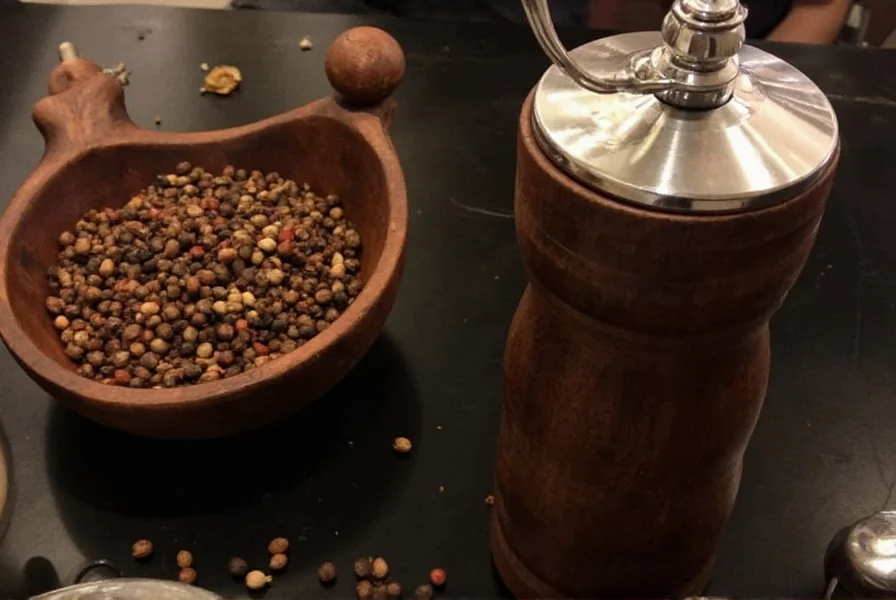Understanding the mechanics and varieties of pepper mill grinders transforms your cooking experience. Freshly ground pepper delivers significantly more flavor and aroma than pre-ground alternatives, making the right grinder an essential kitchen investment. This guide explores the technical aspects, material considerations, and practical features that distinguish exceptional pepper mills from ordinary models.
How Pepper Mill Grinders Work: The Science Behind Fresh Pepper
Pepper mill grinders operate on a simple yet precise mechanical principle. As you turn the mechanism (either by hand crank or twisting the top), peppercorns feed into the grinding mechanism where they're crushed between two abrasive surfaces. The distance between these surfaces determines the coarseness of the resulting pepper.
The grinding mechanism represents the heart of any quality pepper mill. Unlike generic spice grinders that use blade systems, dedicated pepper mills employ burr-style grinding that produces consistent particle size without generating excessive heat that would degrade flavor compounds. This precision engineering preserves the volatile oils in peppercorns that give black pepper its distinctive aroma and taste.
Types of Pepper Mill Grinding Mechanisms
Not all grinding mechanisms deliver equal performance. Understanding these differences helps identify which pepper mill grinder best suits your culinary needs:
| Mechanism Type | Material Composition | Best For | Lifespan |
|---|---|---|---|
| Ceramic | Non-porous ceramic burrs | Dry environments, salt-free use | 5-7 years |
| Stainless Steel | Corrosion-resistant alloy | Pepper and occasional salt | 8-10+ years |
| Carbon Steel | Hardened steel alloy | Pepper only (avoid salt) | 10+ years with maintenance |
| Pepper-specific alloy | Proprietary corrosion-resistant blend | Pepper and salt versatility | 10+ years |
Key Features That Define Quality Pepper Mill Grinders
When evaluating different pepper mill grinder options, several critical features determine long-term performance and user satisfaction:
Adjustability Precision
The finest pepper mills offer micro-adjustable grind settings with at least 8 distinct coarseness levels. This precision allows chefs to select the perfect grind for different applications—from fine powder for baking to coarse cracks for steak seasoning. Look for models with numbered indicators rather than vague "fine to coarse" markings.
Ergonomic Design Considerations
Comfortable handling matters during extended grinding sessions. Premium pepper mill grinders feature textured grips, balanced weight distribution, and intuitive adjustment mechanisms. The best designs allow single-handed operation while providing sufficient torque for consistent grinding.
Capacity and Refilling Mechanism
Consider both chamber size and ease of refilling. Larger capacity mills reduce refill frequency but may compromise portability. Top-fill designs generally offer easier refilling than bottom-fill models, though some premium mills feature clever magnetic closures that simplify the process.
Common Misconceptions About Pepper Mill Grinders
Several myths persist about pepper grinding that affect purchasing decisions:
- "All grinders work for both salt and pepper" - Carbon steel mechanisms corrode when exposed to salt. Only specialized salt-and-pepper mills use corrosion-resistant materials.
- "Electric models are superior" - While convenient, electric pepper grinders often lack the precise control of manual models and may generate heat that degrades flavor.
- "Price correlates directly with quality" - Some mid-range models outperform expensive designer mills through superior engineering rather than brand prestige.
Maintenance Practices for Long-Lasting Performance
Proper care extends your pepper mill grinder's lifespan significantly:
Regularly purge old peppercorns to prevent moisture buildup and rancidity. For ceramic mechanisms, avoid washing with water—instead use a dry brush. Carbon steel mechanisms benefit from occasional light oiling to prevent oxidation. Never store peppercorns in a mill for extended periods if you live in a humid environment.
When grinding stops flowing smoothly, check for peppercorn debris in the mechanism. Most quality mills allow partial disassembly for cleaning without tools. Remember that grinding mechanisms eventually wear out—reputable manufacturers offer replacement mechanisms rather than requiring full mill replacement.

Selecting the Right Pepper Mill Grinder for Your Kitchen
Your cooking habits should guide your selection. Frequent home chefs benefit from larger capacity mills with precise adjustment. Those with limited counter space might prefer compact models. Consider these factors when choosing your ideal pepper mill grinder:
- Cooking frequency and volume
- Available storage space
- Preferred grind consistency for different dishes
- Material compatibility with your environment
- Ergonomic needs (arthritis, limited hand strength)
Professional chefs often maintain multiple pepper mills—one dedicated to black pepper and another for specialty peppercorns like Szechuan or pink peppercorns. This prevents flavor cross-contamination and preserves the unique characteristics of each variety.

Conclusion: Elevating Your Culinary Experience
The right pepper mill grinder transforms ordinary seasoning into a precision culinary technique. By understanding the engineering behind these tools and selecting models that match your specific needs, you unlock significantly enhanced flavor profiles in your cooking. Remember that freshness matters—peppercorns retain their volatile oils much longer than pre-ground pepper, making the investment in a quality grinder worthwhile for any serious cook.
Can I use the same pepper mill grinder for salt?
Only if specifically designed for salt. Standard carbon steel mechanisms corrode when exposed to salt's moisture. Use dedicated salt mills with ceramic or specialized corrosion-resistant mechanisms for salt grinding.
How often should I replace my pepper mill grinder mechanism?
Quality mechanisms last 5-10 years with proper care. Signs it's time for replacement include inconsistent grinding, difficulty turning, or visible wear on adjustment settings. Many manufacturers sell replacement mechanisms separately.
Why does freshly ground pepper taste better than pre-ground?
Peppercorns contain volatile aromatic compounds that evaporate quickly after grinding. Freshly ground pepper preserves these compounds, delivering significantly more complex flavor and aroma compared to pre-ground pepper which loses 60-70% of its volatile oils within hours of grinding.
What's the difference between a pepper mill and a spice grinder?
Pepper mills feature precision-adjustable burr mechanisms designed specifically for peppercorns' hardness. Spice grinders typically use blade systems that create inconsistent particle sizes and generate heat that degrades flavor compounds. Dedicated pepper mills preserve peppercorns' essential oils better than generic spice grinders.
How do I clean a clogged pepper mill grinder?
First, empty remaining peppercorns. For minor clogs, run the mill over a piece of paper to clear debris. For stubborn clogs, disassemble according to manufacturer instructions and use a small brush to remove particles. Never use water on carbon steel mechanisms—use only dry cleaning methods.











 浙公网安备
33010002000092号
浙公网安备
33010002000092号 浙B2-20120091-4
浙B2-20120091-4